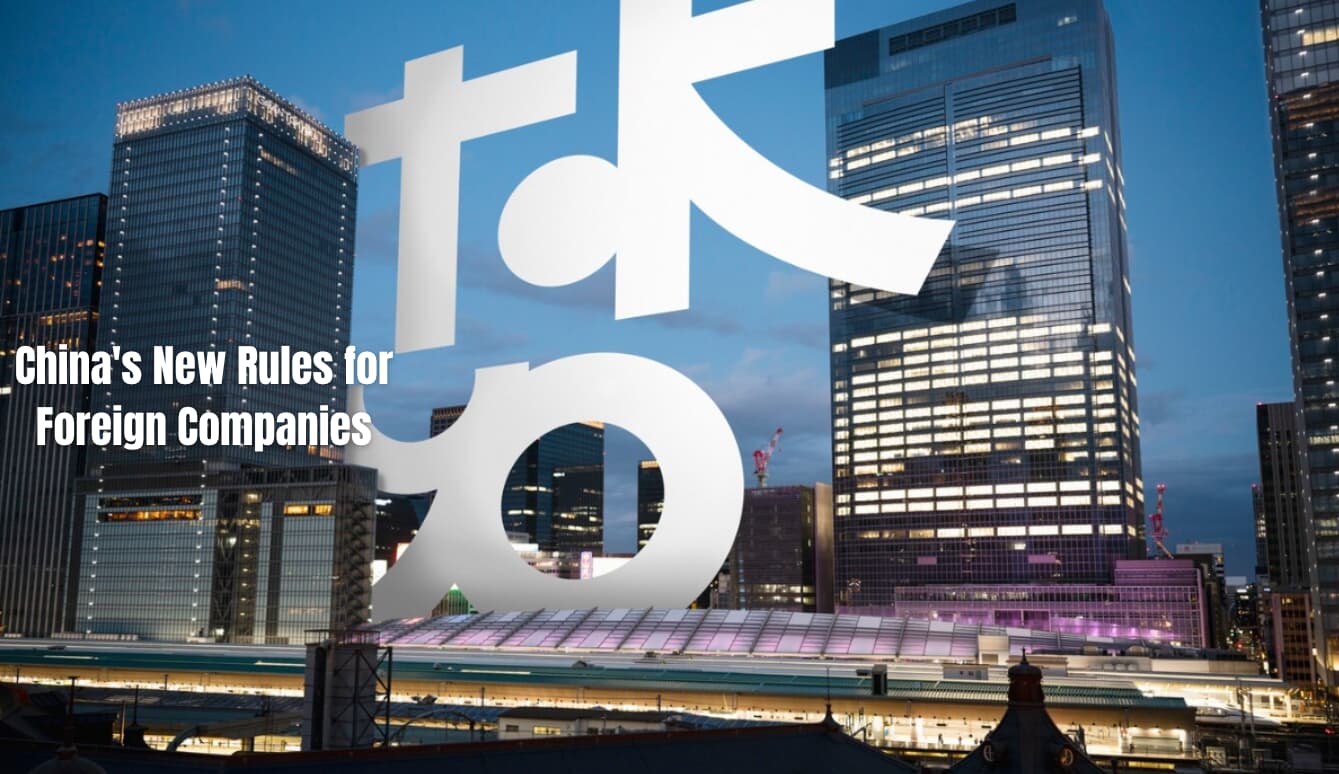China’s Deep Synthesis Regulation is one of the world’s first comprehensive laws targeting AI-generated content.
As deepfake and generative AI technologies advance, China has imposed strict rules to combat misinformation, fraud, and data privacy risks.
This guide explains China's deep synthesis regulation, its key provisions, and how businesses can comply in 2025.
Quick Insights ⚡:
- Effective January 2023, it regulates AI-generated content (text, images, voice, video).
- Strict labeling requirements for synthetic media.
- Bans deepfakes without user consent or for illegal purposes.
- Applies to both domestic and foreign companies operating in China.
- Non-compliance risks fines, shutdowns, or blacklisting.
What Is China Deep Synthesis Regulation?
China’s Deep Synthesis Regulation establishes clear guidelines for how artificial intelligence generates or alters digital content. It directly targets platforms, providers, and users who interact with this technology.
Key Definitions Under the Law
Deep Synthesis refers to the use of artificial intelligence to create or modify digital information. This can include text, photos, audio, or videos that appear to be real but are generated or altered by computers.
Synthetic Content Providers are companies or platforms that make or share AI-generated media. This includes websites or apps that let you create deepfake videos, AI art, or digital voices.
End Users are people who view or use synthetic content. If you watch a deepfake video or interact with a chatbot using AI-generated voices, you are considered an end user.
The law also requires providers to establish guidelines for verifying the accuracy of algorithms, safeguarding user data, and informing users when AI generates content.
Which Technologies Are Affected?
The regulation covers technologies that use AI to generate, edit, or change digital content. These include:
- Generative AI tools like ChatGPT for text, MidJourney for images, or others for making stories or pictures.
- Voice cloning tech that copies someone’s voice. This is often used for tasks such as virtual customer service or digital singing.
- AI-powered video manipulation, such as face-swapping apps or fake news videos that use real people’s images.
You should be aware that any online service in China utilizing deep synthesis must comply with these rules, regardless of where the technology is developed.
If you manage, build, or use platforms with AI-generated content, you must follow the requirements set by the Cyberspace Administration of China.
⚖️ Also Read: Chinese Cybersecurity Law and Regulations: What You Need To Know
Compliance Under China Deep Synthesis Regulation

For deep synthesis services in China, you must adhere to strict guidelines for transparency, privacy, and responsible use.
Service providers have clear duties for content labeling, user rights, what is allowed, and how records are managed.
1. Mandatory Disclosure & Labeling
You are required to label all content created with deep synthesis or AI as such. This means that every AI-generated picture, video, or audio file must have visible tags or watermarks, such as “AI-generated.”
The disclosure must be clear, so users can easily recognize which content isn’t natural or real.
You cannot use editing tools to mislead the public, distort facts, or hurt anyone’s reputation. If you change faces or voices, you need to make these edits obvious.
It is illegal to use deep synthesis in a manner that may cause confusion or deceive others into believing the content is genuine when it is not.
Key Points:
- Mark all AI-created content (text, image, audio, video).
- Make edits visible to the audience.
- Never use deep synthesis to fake events or information.
2. User Consent & Data Protection
Before using someone’s personal information, such as their face or voice, you must get their explicit permission. Written consent is standard for the use of deepfakes or biometrics.
Protecting biometric data is a top priority. You need secure systems to store and process this data.
If you offer services that create or edit personal or sensitive content, you must take extra steps to prevent leaks or misuse.
Best Practices:
- Obtain clear, informed consent from anyone whose data you intend to use.
- Apply strong security for biometric and private information.
- Allow users to withdraw permission or request deletion of their data.
3. Prohibited Use Cases
There are strict bans on creating specific types of deep synthesis content. You cannot use these tools for:
- Spreading fake news or misinformation.
- Scams, fraud, or illegal financial activities.
- Political manipulation or stirring up social unrest.
- Impersonation, including deepfakes of celebrities or any person without their consent.
If you break these rules, you could face severe penalties. Avoid using deep synthesis for anything that could harm society or individuals.
⚖️ Also Read: “I Got Scammed on Alibaba!”: How to Avoid Future Fraud
4. Record-Keeping & Audits
You must keep records of all AI-generated or edited content. These logs must be retained for at least six months. You also have to record who created, edited, or requested each piece of deep synthesis media.
Regulatory agencies may ask to review your records. Ensure your systems enable fast access and timely reporting to the government, as needed.
Checklist:
- Store logs of all AI creations for six months or longer.
- Document user details for accountability.
- Prepare for routine audits by Chinese authorities.
Types and Applications of Deep Synthesis Technology

Deep synthesis technology uses machine learning to create or change digital content. You will see it used for generating texts, making realistic voices, editing faces in videos, and creating virtual 3D environments.
Text Generation and Style Conversion
Text generation is when AI writes content that reads like a human wrote it. You may see this in chatbots, automatic news summaries, or customer service messages.
Style conversion refers to the process of modifying the way information is presented. For example, an AI can rewrite a formal message to make it sound more casual or translate one language into another.
This is useful if you want the same facts but in a style that fits your audience.
These tools utilize large datasets to identify writing patterns. Some risks include spreading false information and creating fake news.
In China, the use of these tools is subject to strict guidelines to ensure that content is not harmful, misleading, or illegal.
Key uses include:
- Writing product descriptions automatically
- Rewriting social posts for brands
- Translating conversation with AI while keeping the reader’s tone
⚖️ Also Read: Wrong Products Sent From China: Issues and Solutions
Text-to-Speech and Voice Synthesis
Text-to-speech (TTS) technology takes written words and reads them aloud through a computer. Voice synthesis can clone authentic voices or make new ones.
This allows you to convert text into natural speech or create custom voices for characters.
Many businesses utilize these tools for customer support, smart devices, education, and creating content that is more accessible to people with disabilities.
Advances in TTS mean the sound is smoother and more realistic than older computer voices.
Important examples:
- GPS and smartphone assistants reading directions to you
- Virtual characters in video games that sound human
- Audio books and news stories in real-time
Voice synthesis also enables the creation of “deepfake” audio, where someone’s voice is manipulated to say things they never said.
This is why China’s regulations require clear approvals and warnings when this tech is used.
Facial Features and Face Replacement
Face generation and replacement let computers create or swap faces in photos and videos using AI. This often happens in deepfake content, where anyone's face can map onto someone else's body in video clips.
You may notice this technology in social media filters, face-swap apps, or movies that digitally edit actors’ faces.
Face replacement can be beneficial in filmmaking or special effects, but it also poses risks when used to create fake news, commit fraud, or invade privacy.
Regulations in China say operators must limit fake or misleading face changes. For safety, any use of face swaps must be marked.
Companies must verify user identities and maintain accurate records to protect against potential abuse.
Main uses:
- Personalized video filters and avatars
- Digital actors in films or commercials
- Testing facial recognition security systems
3D Reconstruction and Virtual Reality
3D reconstruction builds detailed models of objects, people, or whole scenes by analyzing video or images. Virtual reality (VR) utilizes these models to enable you to explore or interact with digital spaces.
This has changed the way you play games, train for new skills, or even tour cities. Architects use 3D models to show how a building will look before it’s built. VR classrooms let students learn science through simulations.
Both require accurate biometric features, such as body and gesture movements, to make experiences feel realistic.
Key uses:
- Virtual tours of museums or real estate
- VR games with lifelike characters and settings
- Training simulations for healthcare, engineering, or emergency response
China’s rules require developers to ensure that personal data remains secure when using this technology, especially when it involves capturing faces, voices, or movements.
⚖️ Also Read: China Gaming Laws: An Overview of Regulations and Restrictions
Main Responsibilities of Deep Synthesis Service Providers
Deep synthesis service providers in China must meet strict requirements to ensure the safe and responsible use of AI-generated content. You need to focus on verifying user identities, making synthetic content transparent, and protecting user data.
Identity Verification and Consent
You are required to collect real-name information from your users before they access deep synthesis tools.
This usually means using a system that matches their identity to official records. Providers must ensure that all users are registered and authenticated by national standards.
Obtaining consent is also a key responsibility. If your service enables users to create content using someone else’s personal information or likeness, you must first obtain explicit and direct consent.
This helps guard against impersonation and privacy violations.
You are responsible for keeping records of consent and proof of user identity. If authorities request proof, you must be able to provide it.
Failing to follow these steps can lead to penalties, service restrictions, or other enforcement actions.
Watermarking and Content Labeling
Every piece of content created by your deep synthesis tools must be marked as synthetic. This often involves adding watermarks, digital tags, or other labels to both visible and non-visible layers of the content. These marks should not be easy to remove.
You need to provide labeling for a wide range of media, including text, images, audio, and video. Labels should be evident to the average user.
For example, a short notice like “AI-generated” may appear on images or videos, while metadata tags could be used for audio files.
Your labeling systems should be designed to work automatically, and you should regularly test to ensure the labels are effective.
The goal is to help users distinguish between real and fake information, reduce misinformation, and increase accountability.
Data Protection Measures
Protecting the data you handle is a legal and operational requirement. You must establish systems to prevent unauthorized access, data leaks, and the misuse of personal information. This includes encrypting data, limiting access, and auditing the use of information.
Regular security assessments are necessary. You should check for vulnerabilities and make updates as needed.
Each employee who handles sensitive information needs to be trained on data protection rules and privacy best practices.
Service providers are also required to keep detailed logs of data processing activities. These records must be stored securely and may be requested by regulators.
If a data breach occurs, you must report it promptly and take steps to mitigate any potential harm.
Why Does China’s Deep Synthesis Provisions Matter?
China’s Deep Synthesis Provisions are significant because they address the legal and ethical risks associated with tools like deepfakes and artificial intelligence-generated content. You see these technologies more and more in videos, virtual scenes, and even audio clips.
These rules focus on protecting both individuals and society by ensuring that AI tools are used responsibly and ethically. The laws aim to limit misuse that can lead to the spread of fake information or harm someone’s privacy.
Key reasons why these provisions matter:
- Tackles new risks: Deep synthesis, such as deepfakes, can easily deceive people. These laws target the risks so you are less likely to get fooled by fake images or voices.
- Protects personal rights: The rules help safeguard your personal information and prevent people from using your face or voice without your consent.
- Promotes trust: When there are clear rules, it’s easier for you to trust the content you see online and for companies to know what is allowed.
- Supports responsible tech growth: The provisions encourage companies and developers to create AI tools that are safe and ethical.
- Sets clear duties: Service providers, technical supporters, and users each have responsibilities to follow, making everyone more accountable.
By introducing these rules, China hopes that technology continues to grow without compromising your safety or trust.
Final Verdict
At Choi & Partners, we understand that the China Deep Synthesis Regulation 2025 introduces new legal obligations for businesses involved in AI and content creation.
Navigating these requirements can be complex, especially with evolving compliance standards and potential legal risks.
Our team of legal experts can assist you with regulatory analysis, risk assessment, policy review, and ongoing compliance for deep synthesis technologies.
If you have concerns or questions about the new law or need support in adapting your business practices, Choi & Partners is here to help.
☎️ Contact us today for reliable legal solutions tailored to your needs in this changing landscape.
❓Frequently Asked Questions
China has set up detailed rules for deep synthesis technology. These rules impact how you use AI to create and share digital content, including text, images, audio, and video.
What are the deep synthesis provisions in China?
The deep synthesis provisions are a set of rules that took effect in January 2023. These apply to all internet information services that utilize deep synthesis technology, such as AI-based content generation or modification.
You must not use these tools for illegal activities, spreading false information, or infringing on others' rights. Providers must authenticate user identities and establish systems to detect and counteract false information.
What is the Deepfake law in China?
The Deepfake law restricts the use and sharing of altered content made with AI, including voice and face changes in images or videos. You cannot create or share deepfakes that break national laws, cause social harm, or mislead the public.
Any tools that allow users to edit biometric data, such as faces or voices, must undergo safety assessments before use.
What is the regulation of AI in China?
AI in China is closely monitored by government bodies. There are specific rules governing the ethical use of AI, particularly in the development and deployment of technology that can impact society.
If you operate an AI service, you must adhere to strict procedures, including verifying users and maintaining transparency. You are also responsible for stopping the misuse of your technology.
Can I use AI-generated content for marketing?
You can use AI-generated content in marketing as long as you follow Chinese regulations. Your content must not contain false, misleading, or illegal information.It is essential to ensure that your content does not infringe on personal rights, spread misinformation, or violate intellectual property laws.
Does this law apply to foreign AI tools, such as ChatGPT?
If you provide AI services within China or your tool is accessible to users in China, these laws likely apply. You must comply with China’s requirements, such as user verification and content controls, even if your AI tool is developed or hosted outside China.
Subscribe to receive updates
Subscribe to receive the latest blog posts to your inbox every week.






